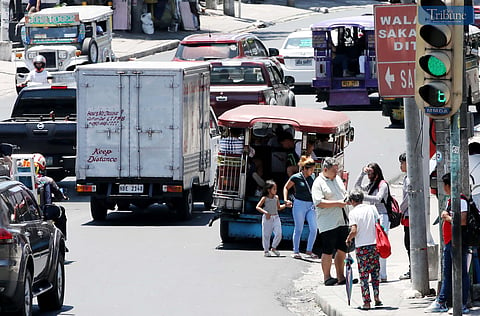
- NEWS
- the EDIT
- COMMENTARY
- BUSINESS
- LIFE
- SHOW
- ACTION
- GLOBAL GOALS
- SNAPS
- DYARYO TIRADA
- MORE

The Department of Transportation (DoTr) is preparing a new directive that will allow various sectors and underrepresented commuters to co-design the framework for the nation’s public transport system, aiming to solve long-standing commuting and mobility challenges.
The move was announced by Lucas Mangulabnan, Supervising Transportation Development Officer for the DoTr, at the recent Philippine Mobility Summit 2025.
Mangulabnan said the forthcoming department order seeks to engage more people in crafting effective solutions for the country's transportation woes.
“We’re pushing for this to be enacted as a Department Order to transform the way we work in the department,” Mangulabnan told the forum. “We hope that other implementing agencies can catch on as well... hopefully this will be rolled out soon.”
The DoTr hopes to include a range of users, such as persons with disabilities (PWDs), senior citizens, women, expectant mothers, people with children, LGBTQ individuals and those carrying heavy or bulky luggage. Mangulabnan called this group the Accessibility or Inclusion Reference Group (AIRG).
The AIRG will serve as an independent consultative body that will be “regularly and intimately involved” in the co-design process.
They will work with technical consultants and experts in conducting feasibility studies and preparing detailed engineering designs for passenger facilities and conveyances, providing direct feedback and alternative solutions for the implementing agency to consider.
Mangulabnan acknowledged that technical experts and consultants often involved in planning transport projects are not regular riders of public utility jeepneys, buses or motorcycle taxis, which can lead to accessibility and inclusion concerns being overlooked.
The co-design framework is intended to facilitate interactions between the AIRG, “people with lived experience,” and technical experts and implementing agencies.
“The government cannot do it alone,” Mangulabnan said. “We’re very much looking forward to seeing more involvement and active participation from the public in the delivery of our transport projects. It is public money, after all.”
Grab, a sponsor of the summit, expressed support for the initiative.
Booey Bonifacio of Grab Philippines called the involvement of the public in crafting transport and mobility plans a "step in the right direction."
"To hear civilian voices, to enable the exchange of ideas, to co-create solutions to make mobility in the Philippines better is the appropriate approach because they are the ones who experience first-hand the problems or shortcomings during their daily commute," Bonifacio said. "They are the ones who can identify issues and what can be done to address these effectively."
The Philippine Mobility Summit was held at One Ayala in Makati City and was the culmination of the “Philippine Mobility Series,” which covered topics from road safety and inclusive urban public spaces to low-cost mass transit. The summit was presented by AltMobility PH and co-presented by the DoTr.
